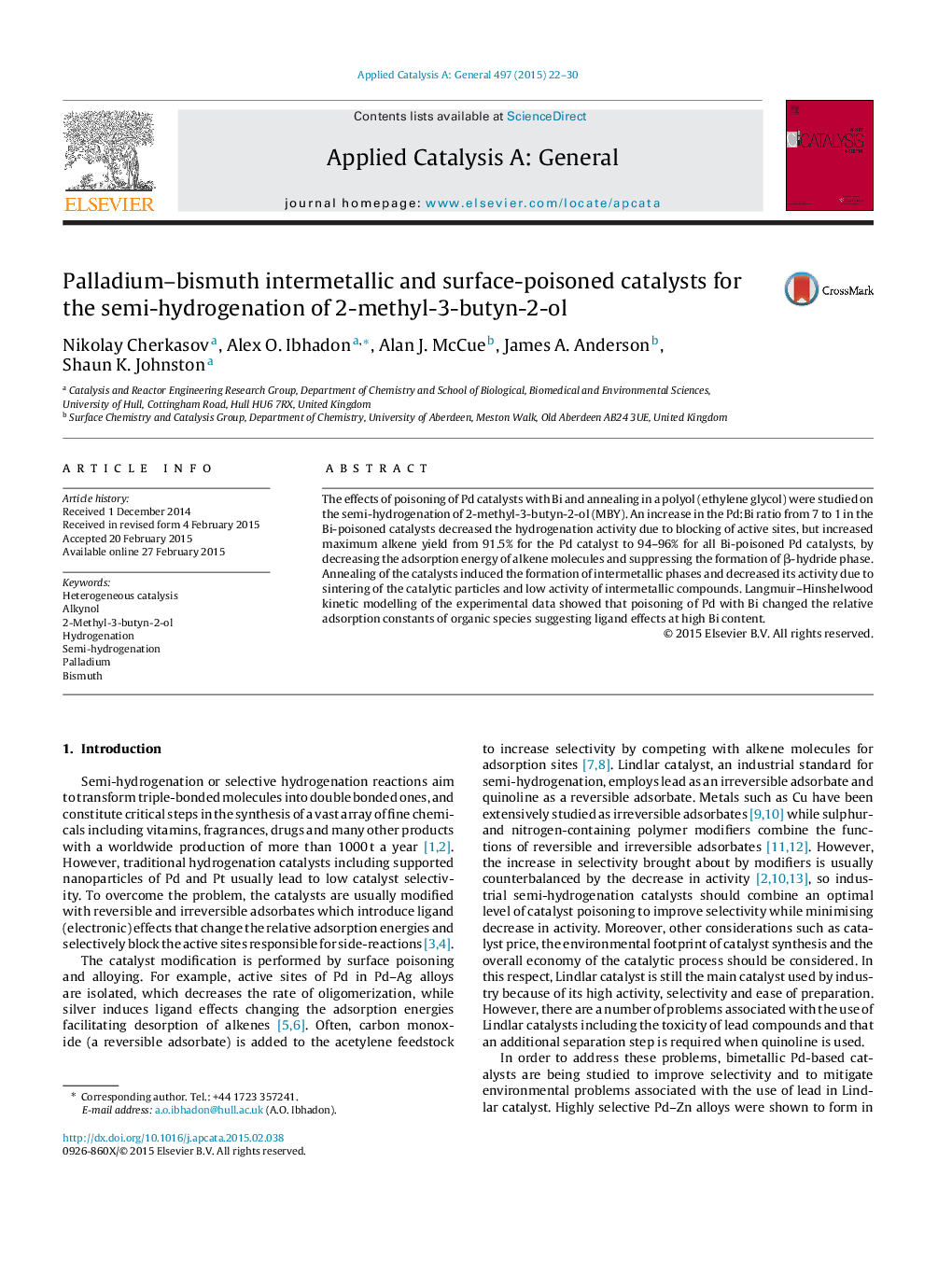| کد مقاله | کد نشریه | سال انتشار | مقاله انگلیسی | نسخه تمام متن |
|---|---|---|---|---|
| 39271 | 45816 | 2015 | 9 صفحه PDF | دانلود رایگان |
• Pd–Bi catalysts were studied in the 2-methyl-3-butyn-3-ol semi-hydrogenation.
• Poisoning with Bi increases alkene selectivity, but decreases activity.
• Poisoning with Bi hinders the formation of Pd beta-hydride phase.
• Kinetic modelling suggets significant ligand effects at high Bi content.
The effects of poisoning of Pd catalysts with Bi and annealing in a polyol (ethylene glycol) were studied on the semi-hydrogenation of 2-methyl-3-butyn-2-ol (MBY). An increase in the Pd:Bi ratio from 7 to 1 in the Bi-poisoned catalysts decreased the hydrogenation activity due to blocking of active sites, but increased maximum alkene yield from 91.5% for the Pd catalyst to 94–96% for all Bi-poisoned Pd catalysts, by decreasing the adsorption energy of alkene molecules and suppressing the formation of β-hydride phase. Annealing of the catalysts induced the formation of intermetallic phases and decreased its activity due to sintering of the catalytic particles and low activity of intermetallic compounds. Langmuir–Hinshelwood kinetic modelling of the experimental data showed that poisoning of Pd with Bi changed the relative adsorption constants of organic species suggesting ligand effects at high Bi content.
Figure optionsDownload high-quality image (113 K)Download as PowerPoint slide
Journal: Applied Catalysis A: General - Volume 497, May 2015, Pages 22–30
